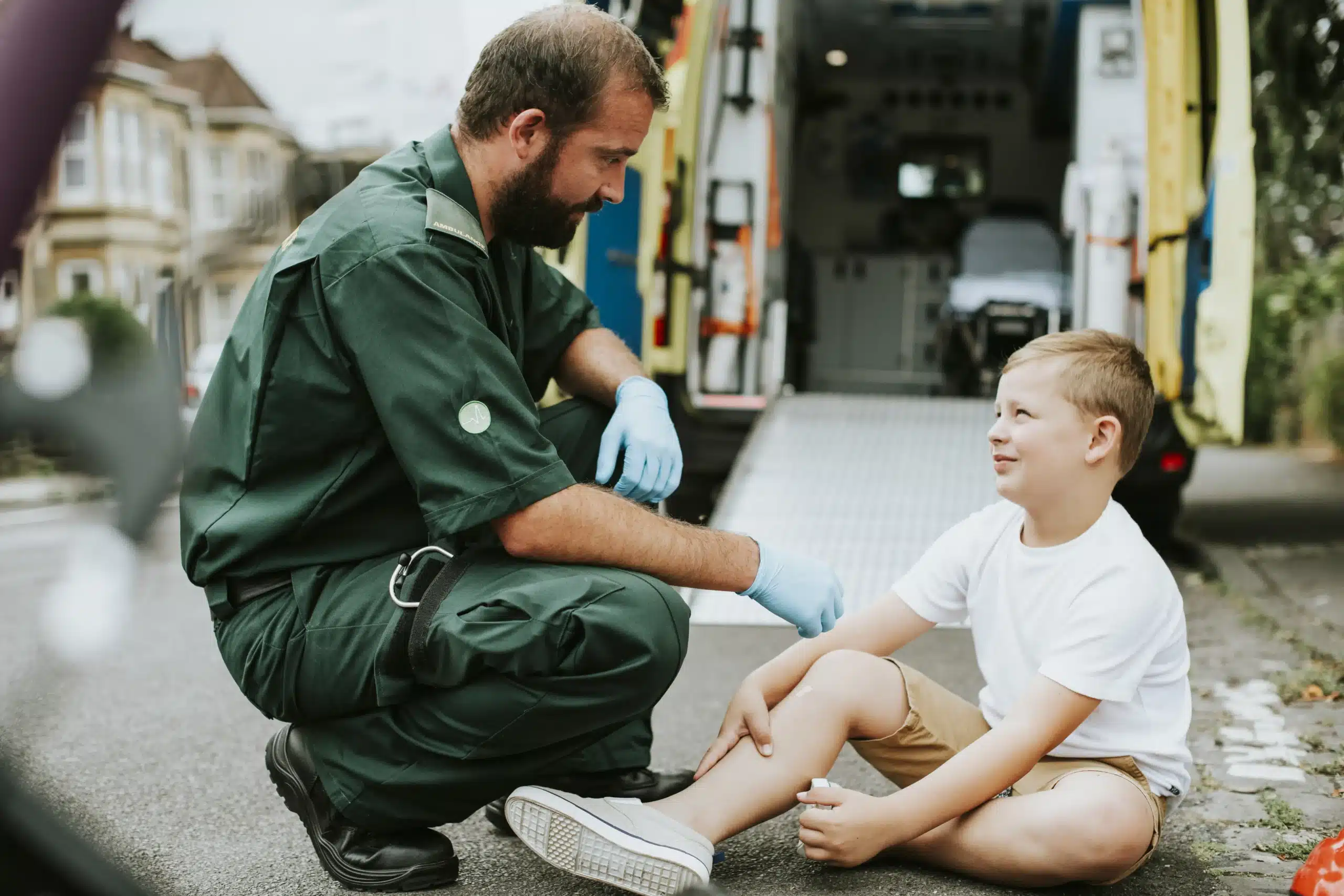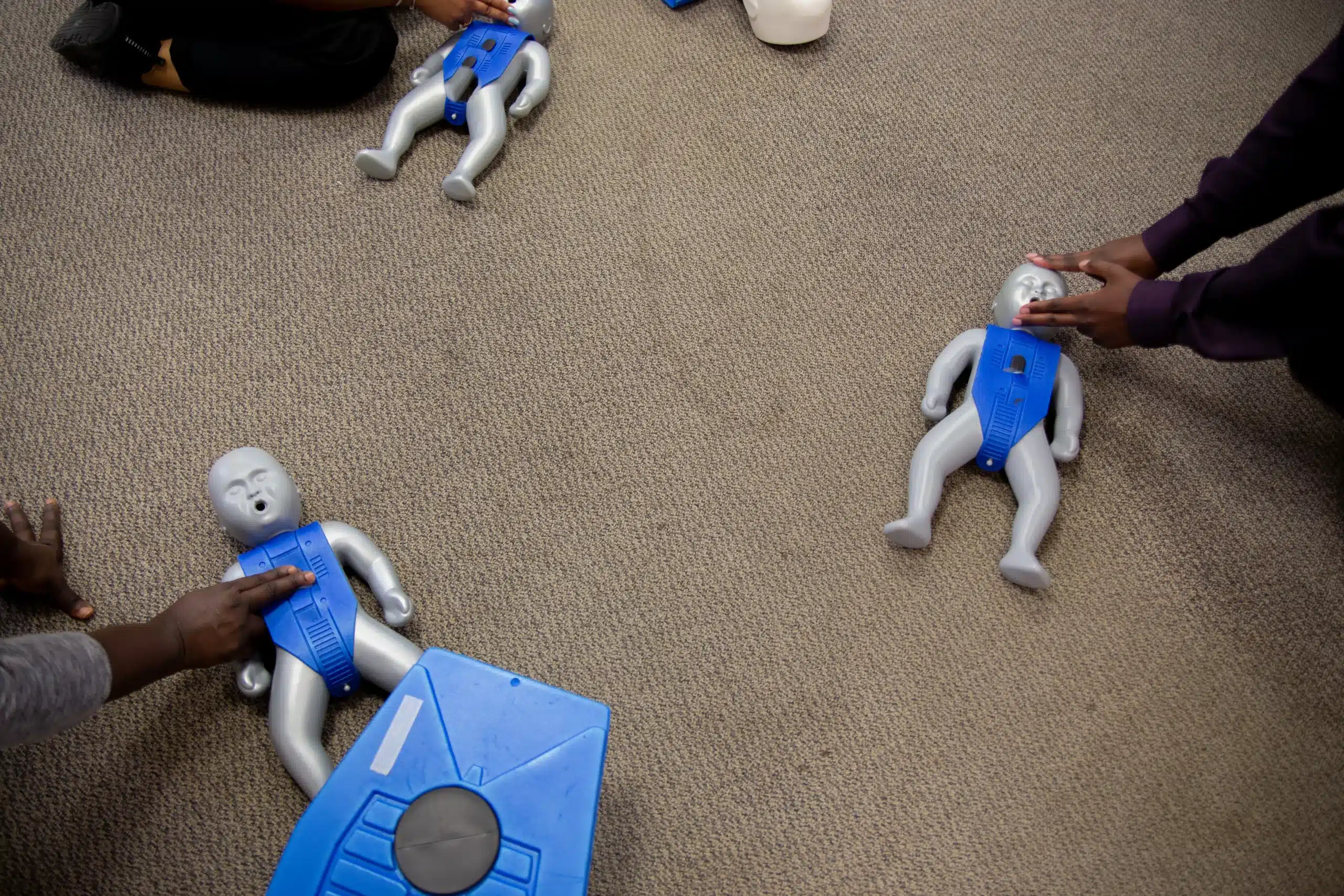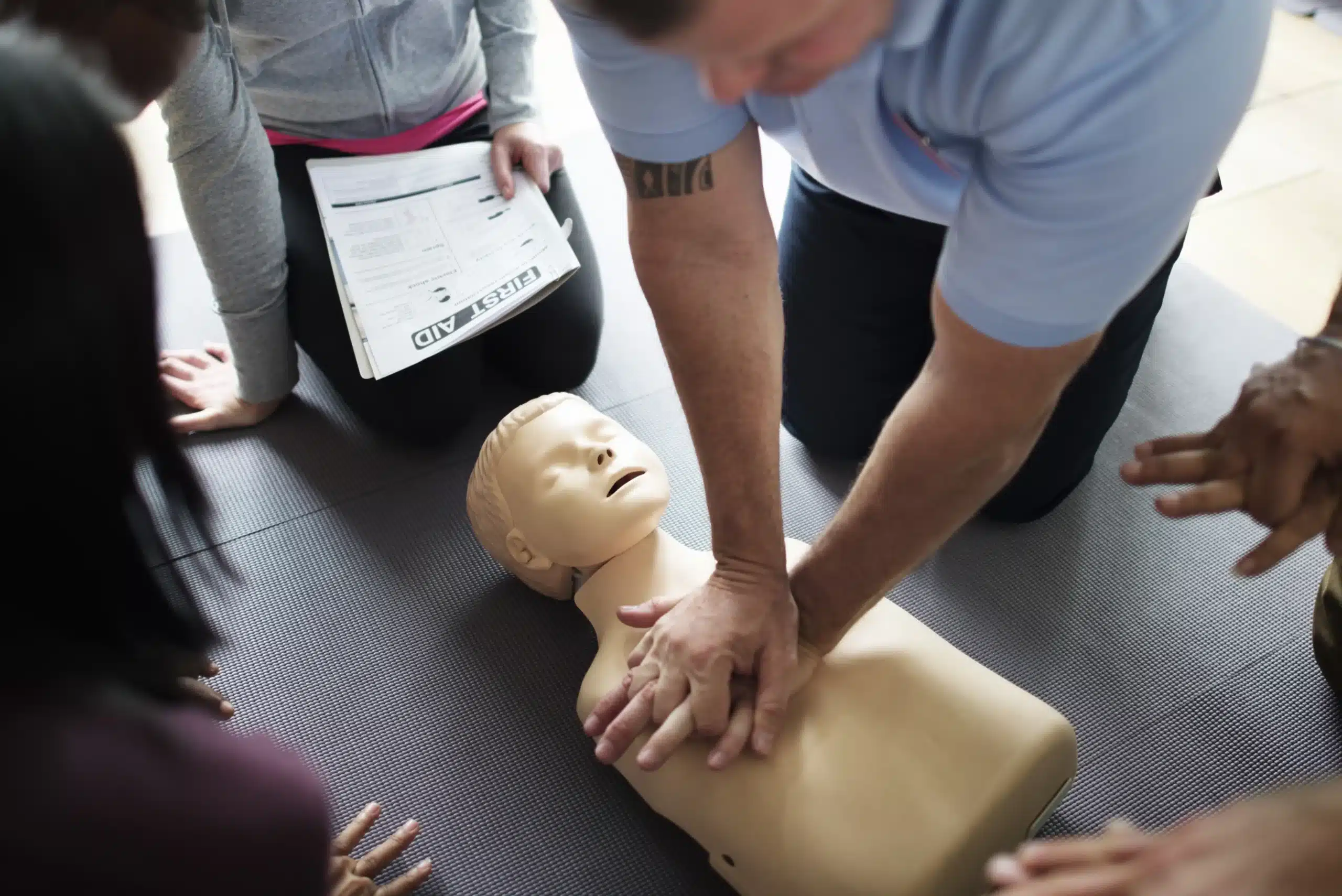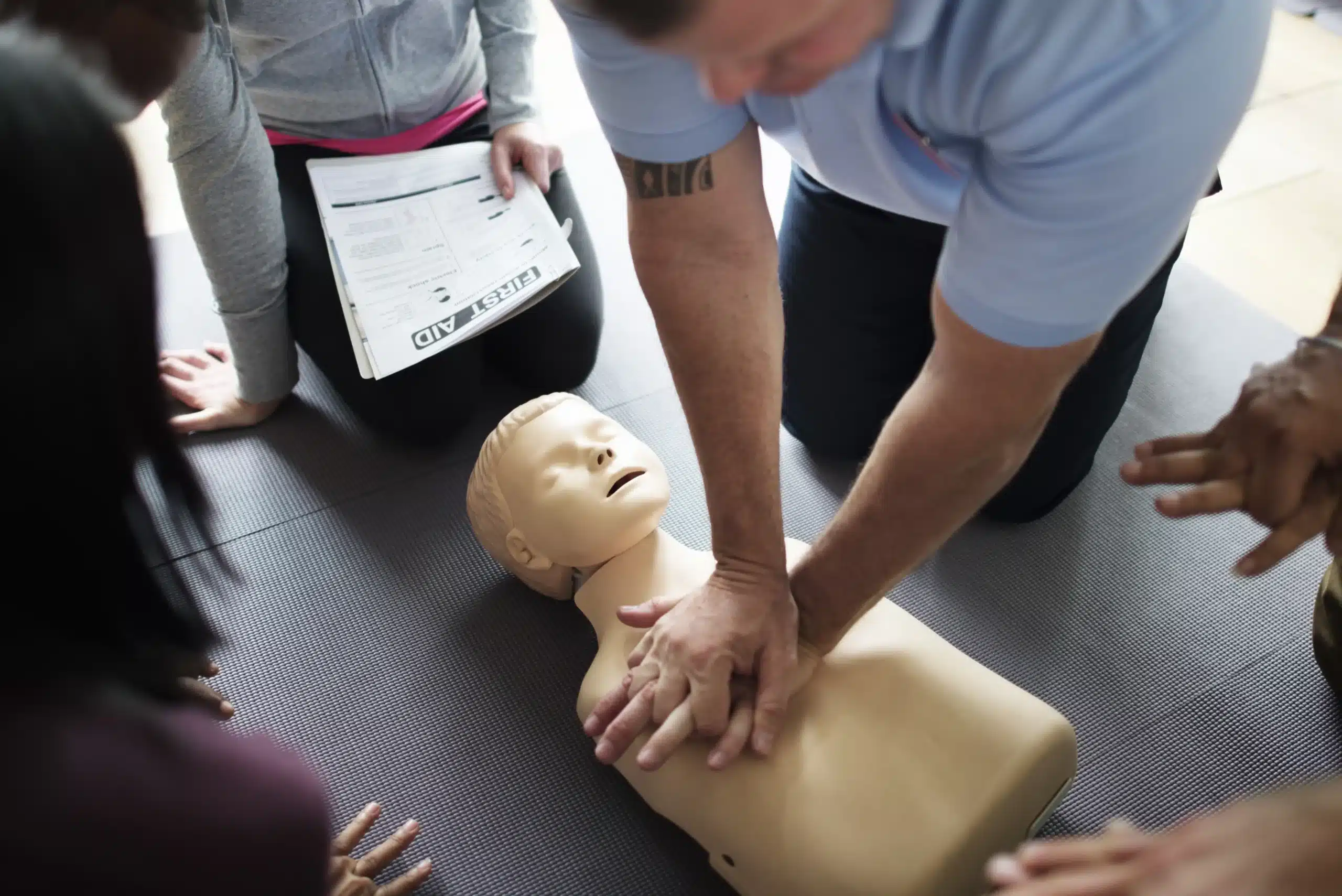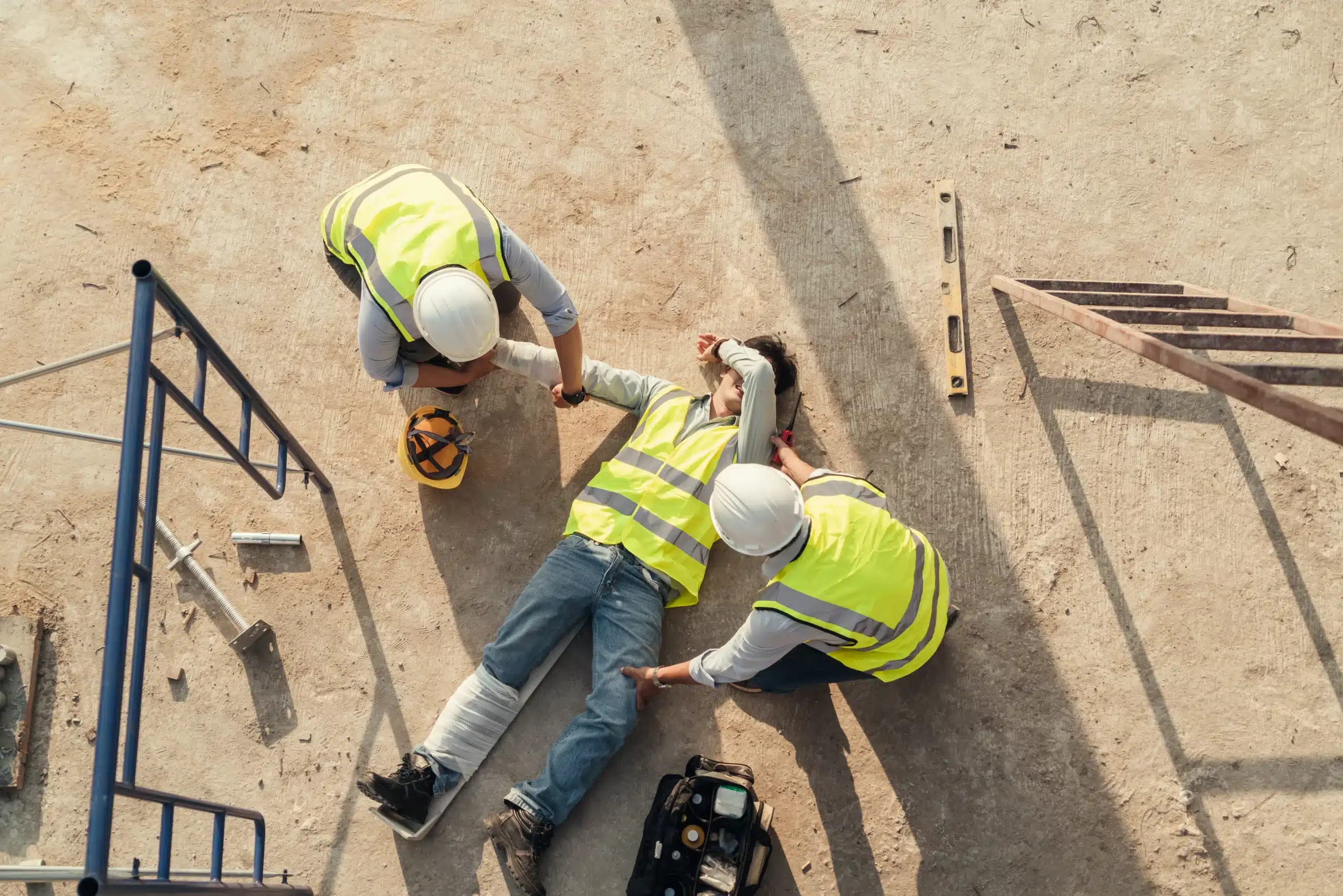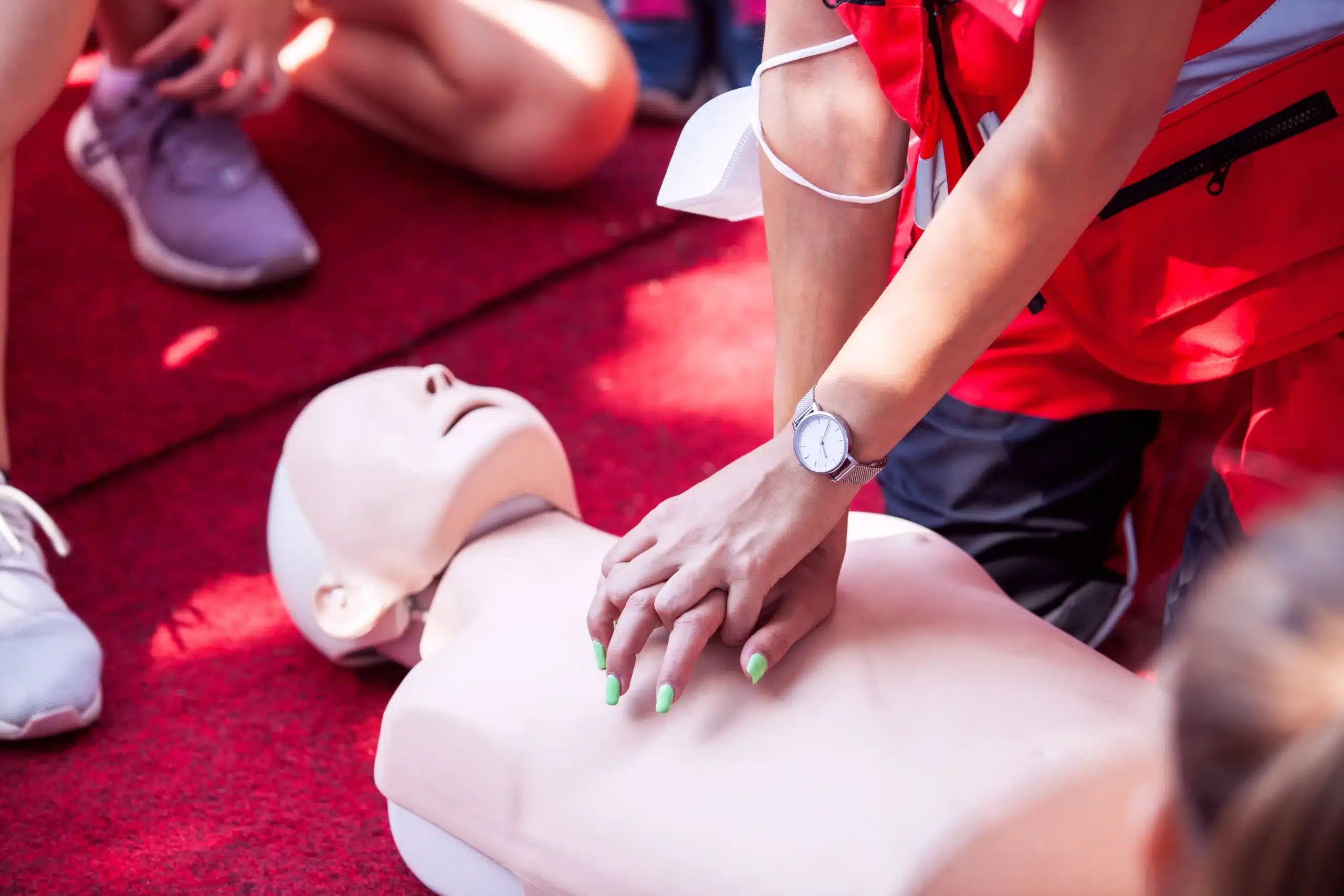In a medical emergency, seconds can matter. Knowing Basic Life Support (BLS) can be the difference between life and death. If you’re in Palo Alto and considering BLS training, this guide is for you. We’ll cover everything from the basics of BLS certification to finding the right course provider and understanding the local healthcare landscape. We’ll also explore why basic life support in Palo Alto is so vital, given the city’s focus on community health and the demands of its healthcare sector. This comprehensive guide will help you understand the importance of basic life support in Palo Alto and empower you to take action.
Key Takeaways
- BLS certification empowers you to act: Whether for personal preparedness or professional advancement, BLS training provides essential life-saving skills applicable in any setting. Seek out AHA-certified courses to ensure you receive the most comprehensive and current training.
- Choose a course that fits your needs: Consider factors like course format, schedule, cost, and instructor experience to find the best BLS training option. Redwood City CPR Classes offers various courses with a low-price guarantee, ensuring quality and affordability.
- Stay current to maximize your impact: Maintain your BLS certification by staying informed about the latest guidelines and renewal processes. Regularly reviewing updates and seeking refresher courses ensures your skills remain effective and your qualifications stay valid.
What is Basic Life Support (BLS)?
Basic Life Support (BLS) is a crucial set of life-saving skills and protocols used in medical emergencies. It focuses on maintaining a patient’s airway, breathing, and circulation. Anyone can learn BLS, but it’s especially important for healthcare providers and those working in healthcare settings. Think of it as the foundation for responding effectively to life-threatening situations. For those in the Redwood City area, including Palo Alto and Menlo Park, Redwood City CPR Classes offers comprehensive BLS training.
BLS training covers essential skills like CPR (cardiopulmonary resuscitation), using an AED (automated external defibrillator), and relieving choking. These skills are critical for providing immediate care, especially during cardiac arrest or respiratory failure. CPR helps maintain blood and oxygen flow, AEDs can restore a normal heart rhythm, and knowing how to help someone who is choking can be life-saving. You can learn more about these techniques through a BLS certification course.
BLS certification typically involves both a written exam and a practical skills test. This ensures you understand the concepts and can perform the skills correctly under pressure. Earning your BLS certification demonstrates your preparedness to respond to emergencies and provide critical care in various medical situations.
Top BLS Course Providers in Palo Alto
Finding the right BLS course provider is an important step. Here are a few reputable options in and around Palo Alto:
Redwood City CPR Classes
Redwood City CPR Classes offers a comprehensive BLS certification course designed to equip you with the skills to respond confidently in medical emergencies. Conveniently located near Palo Alto, Redwood City CPR Classes provides group discounts and a low-price guarantee. They also offer several other American Heart Association courses, including ACLS and PALS certification.
Safety Training Seminars
Safety Training Seminars, a woman-owned American Heart Association Training Center, offers high-quality BLS, ACLS, PALS, CPR, and First Aid training in Palo Alto. You can learn more about their courses here.
Stanford Health Care
Stanford Health Care offers a BLS for Healthcare Provider course that combines online learning with in-person skills practice and testing. This blended approach allows for flexibility while ensuring you receive hands-on training with an AHA BLS Instructor.
Palo Alto CPR Classes
Palo Alto CPR Classes, affiliated with Safety Training Seminars, provides AHA-certified BLS training in Palo Alto. They also offer ACLS, PALS, and CPR courses.
Bay Area CPR
Bay Area CPR also offers BLS training along with ACLS, PALS, and CPR classes in Palo Alto. They emphasize the importance of these skills for community health and safety.
What to Expect in a BLS Course
Taking a BLS course is a rewarding experience, equipping you with essential lifesaving skills. Here’s a glimpse of what you can expect:
Course Duration and Format
BLS courses typically involve a blended learning approach. You’ll start with an online component, like the HeartCode BLS course, covering the theoretical knowledge. This online portion usually takes one to two hours to complete, whether you’re a first-time student or renewing your BLS certification. You’ll then attend an in-person skills session to practice what you’ve learned.
Key Skills You’ll Learn
BLS courses focus on practical skills to manage life-threatening emergencies. You’ll learn how to perform high-quality CPR for adults, children, and infants, including how to use an Automated External Defibrillator (AED). The course also covers techniques for relieving choking.
Certification Process and Validity
After successfully completing both the online and in-person components, you’ll receive an American Heart Association (AHA) BLS-HCP course completion card. This nationally recognized certification is typically valid for two years. Remember to check with your employer or regulatory body for specific renewal requirements.
Hands-on Training with CPR Manikins
The in-person skills session provides valuable hands-on practice. You’ll work with voice-assisted manikins (VAMs) to simulate real-life scenarios. While instructors may not always be physically present during the skills check, support is generally available if needed. This practical training builds confidence and competence in performing BLS techniques effectively.
Cost of BLS Training in Palo Alto
Knowing the cost of BLS training is a practical first step. Let’s break down the typical price range and explore ways to find the best value.
Average Pricing and Competitive Rates
BLS certification courses in Palo Alto teach core lifesaving skills, from high-quality CPR and using an AED to relieving choking. Expect prices to vary based on the provider, course format (blended learning or in-person), and what’s included in the training package. For example, Safety Training Seminars offers its BLS CPR Provider HeartCode course, including online learning and skills testing, for $120. Comparing prices from different providers, like Safety Training Seminars, is always recommended. This research helps you find a course that fits your budget.
Group Discounts and Promotions
Many training centers offer discounts for group bookings, a cost-effective choice for workplaces or groups of friends. Course costs can fluctuate, depending on the content and the type of certification. Check with various providers, such as Bay Area CPR, about their group discounts or promotions. Asking about special rates is always worthwhile—a quick question can sometimes lead to significant savings.
Redwood City CPR Classes‘ Low Price Guarantee
Redwood City CPR Classes offers a low-price guarantee, ensuring quality training at a competitive price. Their commitment to providing affordable courses without compromising instruction makes them a strong option when choosing your BLS training provider.
Invest in Your Personal and Professional Growth
Think of BLS training as an investment in yourself and your community. This training covers essential skills like CPR in various medical settings. Having this certification demonstrates your preparedness to handle critical situations and provide immediate care. Whether for a healthcare career or personal preparedness, BLS certification is a valuable asset. It shows your commitment to safety and empowers you to make a difference when it matters most.
BLS Instructor Qualifications and Expertise
Choosing the right BLS course is crucial, and understanding instructor qualifications is key to making an informed decision. Look for instructors certified by a recognized organization like the American Heart Association (AHA). This ensures they’ve met rigorous standards and possess up-to-date knowledge of BLS guidelines. AHA-certified BLS courses cover essential life-saving skills, giving you confidence in your training. Knowing your instructor’s background helps you evaluate the quality and relevance of the course content.
Certification Requirements and Ongoing Training
BLS instructors undergo extensive training and maintain their certifications through continuing education. This commitment to ongoing learning ensures they stay informed about the latest advancements in emergency cardiovascular care. Instructors who prioritize staying current with guidelines provide students with the highest quality training experience. As you consider different BLS course providers, inquire about their instructors’ credentials and ongoing training. A well-trained instructor can make a significant difference in your learning and confidence. This dedication to ongoing education demonstrates a commitment to providing the best possible instruction.
Instructor Experience in Emergency Response
Beyond certifications, consider the instructor’s practical experience. Instructors with backgrounds in healthcare or emergency response bring real-world insights to the classroom. This experience enriches the learning process, providing context and practical applications for the skills you’ll learn. While formal certifications are essential, an instructor’s practical experience can significantly enhance your understanding of BLS principles and their application in real-life emergencies. This practical knowledge can be invaluable in preparing you to respond effectively under pressure. Choosing an instructor with relevant experience can bridge the gap between theory and practice, making your training more impactful.
Choose the Right BLS Course
Finding the right BLS course means thinking about a few things, like the way the course is taught, how it fits into your schedule, the type of certification you get, and how it relates to your job. Let’s break down these key points to help you decide.
In-Person vs. Online Options
BLS courses are offered in person and online, each with its own advantages. In-person classes give you hands-on training and direct interaction with instructors and classmates. This format lets you get immediate feedback and ask questions about techniques. A blended learning approach, like the BLS CPR Provider Heartcode course, lets you do the knowledge portion online, usually taking one to two hours whether you’re getting certified or renewing your credentials. You’ll then complete an in-person skills session.
Scheduling Flexibility and Convenience
Getting BLS certified shouldn’t disrupt your life. Online or blended learning options let you learn at your own speed and fit the training into your schedule. Study the material whenever and wherever it works for you, and then schedule the in-person skills check separately. This is especially helpful for busy professionals or people with changing schedules.
American Heart Association (AHA) Certification
The American Heart Association (AHA) sets the standard for CPR and BLS training. An AHA-certified course guarantees high-quality instruction based on the latest guidelines. AHA certification is often preferred by employers and shows you’ve met industry standards. Look for training providers who offer AHA-certified courses for the most respected and widely accepted certification.
Healthcare Providers and Beyond
BLS certification is a must-have for healthcare professionals, but it’s also valuable for many other professions. BLS training teaches life-saving skills you can use anywhere—at work, at school, in the community, or at home. Because BLS covers essential skills like CPR for different medical situations, this certification proves you can handle emergencies and give immediate care. Whether you work in healthcare, education, coaching, or simply want to be prepared, BLS certification is a valuable skill.
Benefits of BLS Certification in Palo Alto
Advance Your Healthcare Career
BLS certification is a valuable asset for anyone in the healthcare field. It demonstrates a commitment to patient safety and a readiness to respond to critical situations. Because Basic Life Support (BLS) training covers essential skills like CPR in various medical settings, having this certification shows you’re prepared to handle emergencies and provide immediate care. Whether you’re a medical student, nurse, physician, or other healthcare professional, BLS certification can significantly enhance your career prospects. Many healthcare employers in Palo Alto require BLS certification, making it essential for those seeking jobs in the local healthcare industry.
Prepare for Emergencies
Emergencies can happen anytime, anywhere. BLS training equips you with the skills to respond effectively. AHA BLS certification courses in Palo Alto cover core lifesaving skills, including high-quality CPR, using an AED, and relieving choking. These skills can make a crucial difference in the outcome of a medical emergency. With BLS certification, you’ll gain the confidence and competence to act quickly when faced with a crisis, whether at work, at home, or in the community. Knowing how to perform CPR and other lifesaving techniques empowers you to help those in need.
Contribute to Community Safety
BLS-certified individuals play a vital role in community safety. By having these essential skills, you become a valuable resource for your neighbors, friends, and family. CPR and First-aid training is essential in Palo Alto. Your training can help create a safer environment for everyone around you. Whether responding to a medical emergency at a local event, assisting a stranger, or helping a loved one, your BLS skills can positively contribute to your community’s overall safety and well-being. By being prepared and ready to act, you become part of a network of trained individuals who can make a difference in times of crisis.
Maintain Your BLS Certification
Keeping your BLS certification current is crucial for providing effective care and staying up-to-date with the latest life-saving techniques. This section covers renewal requirements, timeframes, and continuing education options to help you maintain your BLS credentials.
Renewal Requirements and Timeframes
BLS certification, like many healthcare credentials, requires periodic renewal. This ensures you maintain the necessary skills and knowledge to respond effectively in emergencies. Generally, BLS certification is valid for two years. It’s essential to renew your certification before it expires to avoid any gaps in your qualifications. Staying current with the latest guidelines and practices is vital for delivering high-quality care. Check with your certifying organization, such as the American Heart Association, for specific renewal requirements and deadlines. Planning ahead and scheduling your renewal course in advance will help maintain continuous certification.
Continuing Education Options
Several options are available to renew your BLS certification. Many organizations offer renewal courses covering the latest guidelines and techniques. These courses often combine online learning with in-person skills practice and testing. The online portion allows you to learn at your own pace and complete the cognitive portion of the training, which typically takes between one and two hours. The HeartCode BLS course is one example of a blended learning option. In-person skills sessions provide hands-on practice and allow you to demonstrate your proficiency to a certified instructor. When selecting a training provider, consider factors like AHA certification, flexible scheduling, and cost. Look for providers offering American Heart Association (AHA) certified courses, as this is the gold standard in CPR and BLS training. Online BLS certification courses offer flexibility and convenience, especially for busy professionals. Choosing a course that aligns with your learning style and schedule will make the renewal process smoother and more effective.
Why Palo Alto Prioritizes BLS Training
Palo Alto’s focus on BLS training comes from its healthcare sector’s needs, community health initiatives, and the region’s fast-paced, innovation-driven culture. These factors create an environment where BLS skills are highly valued.
Local Healthcare Industry Demands
Palo Alto’s healthcare industry has a constant need for BLS-trained professionals. BLS certification shows you’re ready to handle emergencies and provide immediate care, stabilizing patients until more advanced help arrives. The many medical facilities in the area further highlight the importance of having BLS-trained staff. For a deeper look, check out this guide for healthcare providers.
Community Health Initiatives
Palo Alto also recognizes how BLS training improves community health and safety. CPR and first-aid classes help people respond effectively during emergencies, potentially saving lives anywhere from homes and workplaces to public areas. This focus on community preparedness creates a culture of helpfulness and strengthens Palo Alto’s overall safety network.
Silicon Valley’s Innovation Culture
Silicon Valley’s fast-paced environment demands efficiency, which influences how professionals approach training. BLS certification programs offer flexible options like blended learning, combining online coursework with in-person skills sessions. This lets busy professionals learn life-saving skills around their schedules. The BLS CPR Provider Heartcode course is a good example, offering a convenient online portion.
Get the Most Out of Your BLS Training
Prepare for Your Course
Getting ready for your BLS course can make a real difference in how much you learn and how confident you feel. The BLS Provider Heartcode course lets you complete the online portion, which usually takes one to two hours, whether you’re getting certified for the first time or renewing. Knowing this upfront helps you plan and set aside the necessary time. Consider finding a quiet spot with minimal distractions, and gather any materials you might need, like a notebook or pen.
Apply BLS Skills in Real-Life Scenarios
BLS training equips you with essential skills like CPR, applicable in various medical emergencies. This certification demonstrates your preparedness to handle critical situations and provide immediate care. Think about how you’d react in different scenarios—perhaps a family member collapses at home, or a coworker has a medical emergency at the office. Mentally rehearsing how you’d apply your BLS skills can build your confidence and improve your response time in a real crisis. Consider taking a first aid course to supplement your BLS training and broaden your skillset.
Stay Updated with Latest Guidelines
Healthcare guidelines are constantly evolving. To ensure your skills are current, look for training providers who offer American Heart Association (AHA) certified courses, the gold standard in CPR and BLS training. Staying up-to-date not only ensures you’re providing the best possible care but also demonstrates your commitment to professional development. Regularly reviewing updated guidelines and seeking refresher courses when needed will keep your skills sharp and your certification valid.
Related Articles
- Basic Life Support (BLS) in Menlo Park: A Guide – Redwood City CPR Classes
- BLS Classes in Menlo Park: Your Complete Guide – Redwood City CPR Classes
- BLS Courses in Redwood City: Your Complete Guide – Redwood City CPR Classes
- Advanced Cardiac Life Support (ACLS) in Palo Alto – Redwood City CPR Classes
Frequently Asked Questions
How long does it take to get BLS certified?
BLS courses often use a blended learning format. You’ll typically complete online coursework, which takes about one to two hours, followed by an in-person skills session. This flexible approach allows you to learn the material at your own pace and then demonstrate your skills to an instructor.
What’s the difference between BLS and CPR?
CPR, or cardiopulmonary resuscitation, is one of the core skills taught within a BLS course. BLS encompasses a broader range of skills, including using an AED and relieving choking, making it a more comprehensive approach to emergency medical care. Think of CPR as a vital component within the larger framework of BLS.
How much does a BLS course cost in Palo Alto?
The cost of BLS training varies depending on the provider and the specific course format. It’s always a good idea to compare prices from different providers in your area. Many training centers offer group discounts, so if you’re signing up with colleagues or friends, be sure to ask about potential savings. Redwood City CPR Classes, for example, offers a low-price guarantee.
Where can I find BLS courses near me?
Several organizations offer BLS courses in and around Palo Alto. Redwood City CPR Classes, Safety Training Seminars, Stanford Health Care, Palo Alto CPR Classes, and Bay Area CPR are all reputable options. When choosing a provider, consider factors like location, scheduling flexibility, and whether they offer American Heart Association (AHA) certification.
Why is AHA certification important for BLS?
The American Heart Association (AHA) is a leading authority in CPR and emergency cardiovascular care. AHA certification ensures your BLS training meets the highest standards and reflects the latest research and best practices. Many employers prefer or require AHA certification, so it’s a valuable credential to have.
